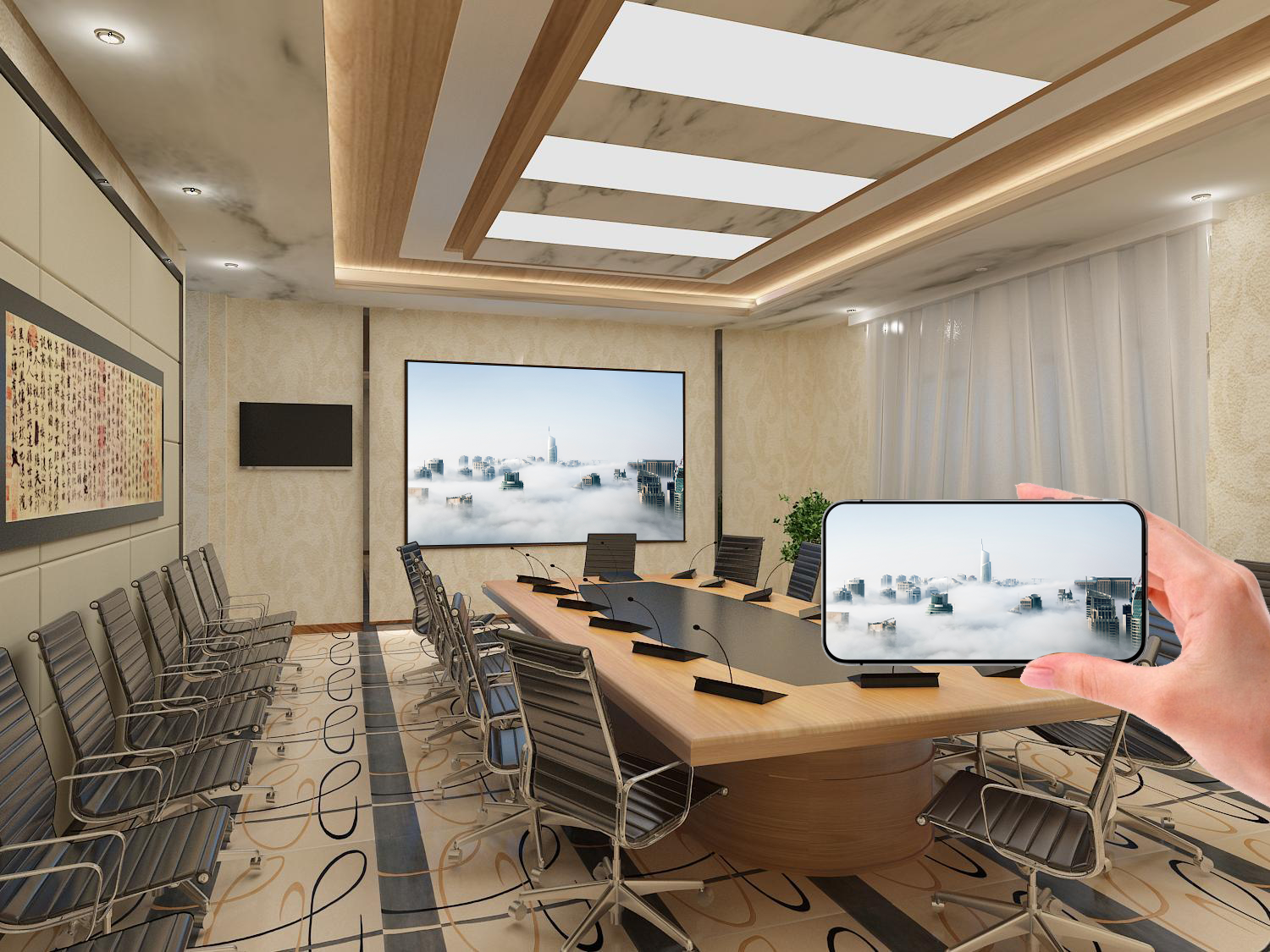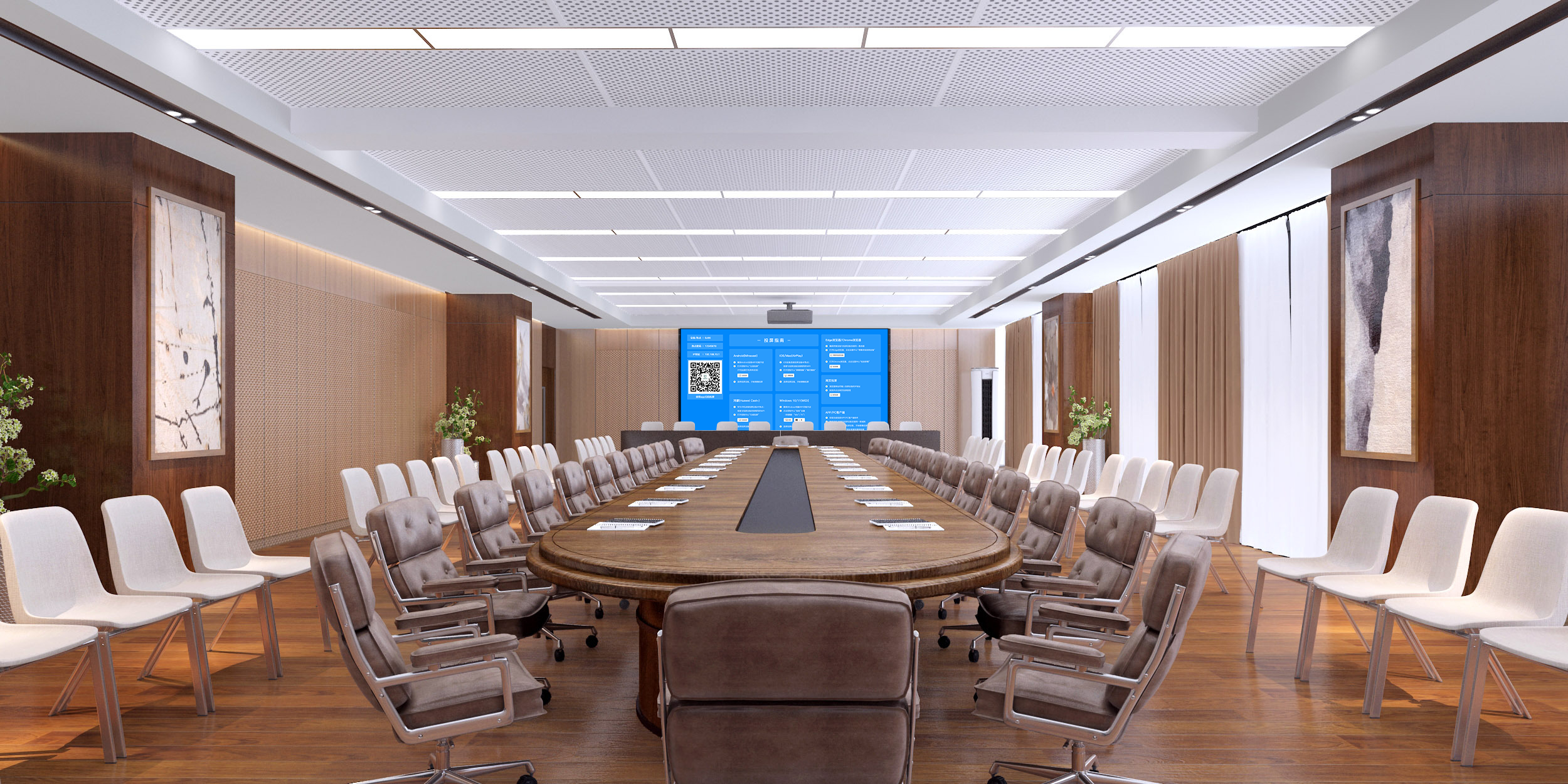Screen Mirroring: A Universal Solution for All Scenarios
This screen mirroring solution is designed to meet the need for cross-screen content transfer between multiple devices. It’s compatible with devices like phones, computers, and tablets, as well as various large-screen terminals. It supports both wireless and wired connections, is simple to use and stable to transmit, and covers all scenarios, including office, education, entertainment, and business. This makes information display more efficient and interaction more flexible.
Universal Device Compatibility, Seamless Connections
Whether it’s an Android/iOS phone, a Windows/macOS/Linux computer or tablet, a smart TV, a projector, a meeting display, or an electronic whiteboard, it all connects seamlessly. The connection methods are flexible and diverse:
- Fast Wireless Connection: Use native device functions (AirPlay for Apple, Miracast for Android, and Project for Windows) or a QR code to pair in 2-3 seconds, with no need to install any plugins.
- Wired Backup: It comes with an adapter for HDMI, Type-C, and DP interfaces, so older devices can be plugged in and used immediately, avoiding the hassle of an unstable wireless signal.
- Automatic Adaptation: With compatibility for over 95% of both new and old models, from classic laptops to the latest flagship phones, you’re not limited by brand, model, or system version.
Clear and Stable Transmission, Maximized Content Quality
It offers 1080P Full HD mirroring, with high-end devices capable of 4K Ultra HD transmission. When mirroring design drawings, the line textures and color details are accurately reproduced. When mirroring data reports, the small text and charts are sharp and clear. When mirroring a movie, the picture is crisp and smooth. Using dynamic anti-interference technology, the transmission latency is as low as 20ms and the audio-video synchronization error is less than 10ms. When playing a dynamic presentation or a video, there’s no ghosting or lagging, so the operation is smooth and responsive. The experience is comparable to local playback.
Practical Functions for All Scenarios
- Office Meetings
- Multi-Screen Split Display: 2-4 devices can mirror in a split-screen view to compare proposals, so you don’t have to switch back and forth. The differences are clear at a glance, boosting decision-making efficiency by 40%.
- Real-Time Annotation: During a discussion, you can directly draw on the large screen to highlight key points and edit charts. The annotations are synchronized back to the mirrored device and can be saved to a shared folder with one click at the end.
- Remote Collaboration: Remote participants can mirror their devices to show the on-site team their perspective, while the local team mirrors the proposal details. The large screen displays everything together, so remote communication feels like it’s happening in the same room.
- Classroom Teaching
- Two-Way Interaction: A teacher can mirror courseware and annotate it in real time, and students can mirror their homework and questions to the large screen to share, making class interaction more active.
- Multi-Screen Sync: The main screen can display the explanation of a concept, while a secondary screen displays a practice question, and students’ devices can receive the content in sync, which is convenient for review after class.
- Outdoor Studies: In an environment with no network, it supports a direct connection for mirroring. Photos taken on-site with a phone can be instantly mirrored to a large screen, making on-site discussions more intuitive.
- Home Entertainment
- Multi-Device Switching: Phones and tablets can take turns mirroring movies and games, so there’s no fighting over devices.
- Screen-Off Mirroring: After mirroring from your phone, you can turn off the screen to save power without interrupting the playback.
- Parent-Child Interaction: You can mirror an educational video for kids to the TV, and a parent can remotely control the playback progress on their phone, balancing companionship with guidance.
- Commercial Presentations
- Timed Mirroring: In a mall or exhibition hall, you can preset content to play in a loop, which reduces manual operation.
- Multi-Screen Linkage: Large screens in different areas can mirror related content (like a product introduction and user reviews) to fully display brand value.
- Instant Updates: Salespeople can use their phones to mirror the latest promotional poster, allowing them to flexibly adjust the content being displayed.
Smart Management + Security, for a Hassle-Free Experience
- Centralized Backend Management: An administrator can remotely monitor the operational status of all mirroring devices, and it supports batch upgrades and on/off functions, which boosts maintenance efficiency by 60%.
- Precise Permission Control: You can set up a device whitelist and a mirroring password, so only authorized devices can connect, preventing interference from irrelevant content.
- Encrypted Data Transmission: All data transmission during mirroring is encrypted to prevent the theft or alteration of sensitive information like business secrets and educational materials.
- Usage Data Statistics: It automatically records data like the number of mirrors, duration, and most popular devices, which provides a basis for scenario optimization.
Installation and deployment are simple. Existing large-screen displays can be used just by connecting to the network, with no complex modifications required. Whether for corporate offices, schools, home entertainment, or commercial presentations, this screen mirroring solution can precisely meet your needs, easily solving various pain points in content delivery and interactive collaboration.